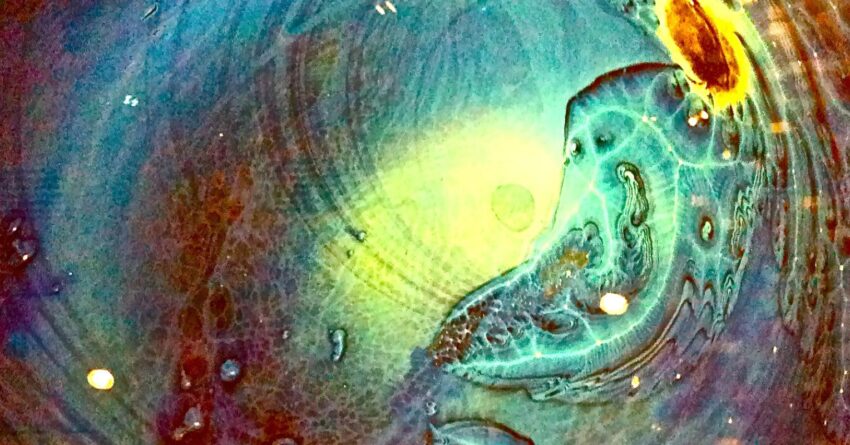By Lizabeth Roemer, Ph.D., and Josh Bartok
***Spoilers for “Inside Out 2”! If you haven’t seen it and want to be surprised, put this aside until you do.***

Source: Courtesy of Josh Bartok
Once again, the creators of Disney’s “Inside Out 2” and their psychologist consultants have created a nuanced view of emotions that can inform and inspire children and adults alike. The movie portrays Anxiety as an overzealous protector and hyper-caffeinated plan-maker whose energy can harm friendships and make Riley into a person she does not mean to be. Moreover, the movie offers an intervention for working with Anxiety: welcoming her, honoring her efforts, and compassionately inviting her to step back and take a seat in her special relaxing chair. In important ways, this fits with the science and wisdom about anxiety that Sue Orsillo and I have shared in The Mindful Way Through Anxiety and Worry Less, Live More. As compelling as Anxiety was, I was particularly struck by the complex presentation of beliefs about the self and the subtle message the film provided regarding the wisdom of holding a flexible, multifaceted view of ourselves.
Early in the film, Riley, like so many of us, grounds herself in the monolithic belief “I am a Good Person.” Joy works hard to help maintain this view by banishing any complex memories that counter this rigid belief so they won’t interfere with Riley’s self-definition. We can see the usefulness of this approach: Riley takes generous and kind actions partly because she believes she is a good person, and these actions further support her belief, feeding this cycle of “goodness.” However, there are costs of banishing dissonant memories: Riley has to reject, disown, and forget any parts of her life that don’t strengthen the narrative “I am a Good Person.” We all know the experience of having thoughts, feeling emotions, or taking actions that aren’t consistent with the person we aspire to be, and depending on how we respond to them, these can destabilize us and make it harder for us to act in ways that we value.
Anxiety enters the scene and begins rapidly generating conditional imagined outcomes that further destabilize Riley’s sense of self. Anxiety tells Riley to be guided by limiting beliefs like “If I’m good at hockey, I’ll have friends,” and “If I make the team, I won’t be lonely.” This gradually leads to Riley’s belief that she’s not good enough, and that her being OK conditionally depends on certain outcomes. It’s easy to see the problems with these beliefs: They suggest that Riley’s worth is dependent on circumstances that she doesn’t necessarily control. Adopting Anxiety’s worldview eventually leads Riley to have a panic attack.
However, even in these problematic beliefs, there are kernels of insight that can be helpful for Riley: For instance, she values the connections she makes when she plays hockey. This awareness could be an opening to examining what kinds of relationships she finds valuable and using that self-knowledge to guide her actions. But, from Anxiety’s protective, rigid worldviews, the only action Riley can take is to desperately and panickedly keep trying harder to make the hockey team—and to do that in ways that undermine her relationships, which are actually the thing Riley values most.
The film makes a valuable, nuanced point about this: It is not enough to replace one rigid, monolithic self-defining belief (Anxiety’s “If I make the team, I’ll have friends”) with another one (Joy’s “I am a Good Person”). Joy and the other emotions help Riley to release all of her limiting beliefs and to find a complex, dynamic, flexible sense of self that actually encompasses all of Riley’s experiences. She is a good person… and she is someone who experiences envy, or gets frustrated and sometimes hurts the people she loves and values. She is simultaneously multiple different and even conflictual things, many realities are true, and all of these parts of her can ebb and flow as she makes her way through life, embracing this flexible self (Giommi et al., 2023). Like Walt Whitman, Riley (and all of us) can affirm “I am large, I contain multitudes.”
So how can we embrace these lessons in our own lives?
Notice when self-defining beliefs arise
We all have internal dialogues that respond to thoughts, feelings, behaviors, and situations in our lives and discern what they may say about us as people. Noticing the self-definitions that arise can help us to more effectively choose how we will respond to them, rather than allowing them to buffet us around with judgments and fear of failure. One linguistic clue that a belief is limiting and self-defining is that it begins with the construction “I am….” If we can notice these thoughts and reframe them in a way that is not self-defining and limiting, we can lessen their power and move toward flexibility and freedom. For instance, rather than believing “I AM a terrible person” we can instead practice noticing “thoughts and feelings that I’m an angry, unkind person are arising right now.” This linguistic distinction may seem small, but it can be quite liberating. Try playing with it in your own life!
Recognize our own (and others’) spaciousness
When thoughts and beliefs arise, they often present in extremes: I am always unkind; I am completely selfish. When we notice these arising, we can remind ourselves that we may manifest many ways all at once, or at different times in different contexts: generous and selfish, angry and grateful, skillful and clumsy. Rather than rigidly believing the thoughts that arise embody entire defining truths about us, we can allow them to be a part of our experience, of our dynamic and multifaceted being, along with other (perhaps contradictory or complementary) thoughts and beliefs. Our “true self” includes a range of feelings and all the actions we have taken over our lives. Whatever painful experience we are in the throes of right now, it does not define us. And when other people do something that hurts us or that we disapprove of, it can be helpful to remind ourselves that this is true of them as well.
Identify what is meaningful to us
There is an important distinction between holding a rigid, defining belief about who or how we are, and identifying how we aspire to show up. We can recognize that we aspire to be kind and generous and do our best to embody those things when we can without requiring that only kind and generous thoughts arise or that we always and in all circumstances take maximally kind and generous actions. When we notice that we are rigidly holding ourselves to a certain way of being, we can instead ask ourselves if this is a way we aspire to be in our lives. This connection to what we value can help us to make choices and take actions in challenging situations that are consistent with how we would like to be and also to get back up and back on track when we have instead spoken or acted in a way that isn’t consistent with our values. Unlike maintaining a rigid self-image, aspirations (or intentions) give us an opportunity to reconnect to what matters to us again and again, no matter what else has happened.
Respond to any unwanted aspects of ourselves with kindness and care
Attempting to banish the painful memories, unwanted thoughts, or regretful actions we’ve taken is human and understandable—but it’s ineffective and often counterproductive. Instead, we can recognize that all parts of us happen for good reason (i.e., we come by them “honestly”), and we can greet even our anger, desire, envy, or shame with kindness and understanding. Gently holding all parts of ourselves, we have more opportunity to choose to do what feels meaningful in any given situation, see how that goes, then adapt, respond, and continue choosing. As less-desired aspects emerge in our thoughts, words, or actions, rather than labeling them “not-me” and fighting against them, or simply turning away from them, we can observe their impact, cultivate compassion for ourselves, and make a new choice in line with our aspirations.
Instead of rigidly defining ourselves, we can flexibly observe our lives unfolding and make choices that bring us a sense of meaning and satisfaction, and acknowledge that who we “are” is always changing and expanding.
Josh Bartok is a contemplative photographer and life coach. He is the author of two children’s books and several collections of inspiring quotes.
